パタン Patan のラトマチェンドラナート寺院 Rato Machhendranath Temple に次いで、ブンガマティ Bungamati のラトマチェンドラナート寺院を訪ねました。Machhendranathの御神体は、年の半分はパタンで、残りの半年はブンガマティで祀られます。12年に一度、お祭り Rato Machhendranath Jatra の際に、山車はパタンからブンガマティまで進んでいきます。IMNEPAL.COMの「Rato Machhendranath Jatra : Chariot Festival Nepal」の記事によると
The deity of Rato Machhendranath Rath Jatra is shared with the village of Bungamati. Bungamati is close to Patan. Every twelfth year the chariot of Rato Machhendranath Rath Jatra itself has to be taken to Bungamati. Road may be very hilly and far from smooth. Each year the deity Machhendranath spends three months in Bungamati but in these intervening years, it is carried there on a palanquin.
他の11年は輿にのせられて移動の様です。
2015年の震災はこの小さな村にも壊滅的な影響を及ぼしました。村を散策してみると、今では少し平穏を取り戻したかのように池で子供たちが遊んでいましたが、ようやく家々の再建が少し進んだ程度の様でした。
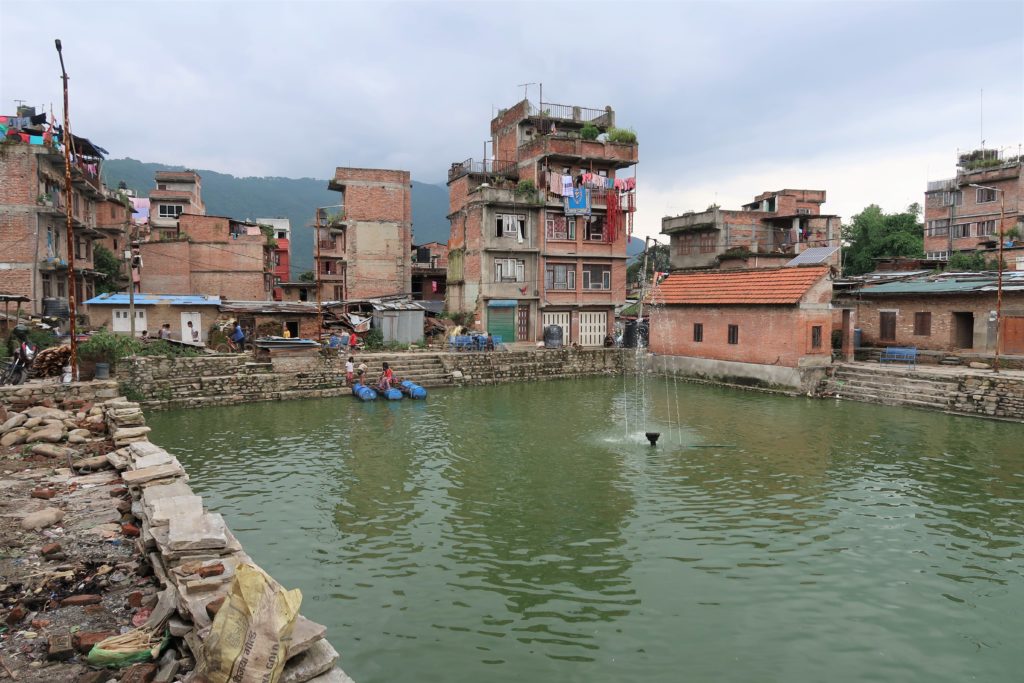 寺の入り口は比較的保たれている様ですが、
寺の入り口は比較的保たれている様ですが、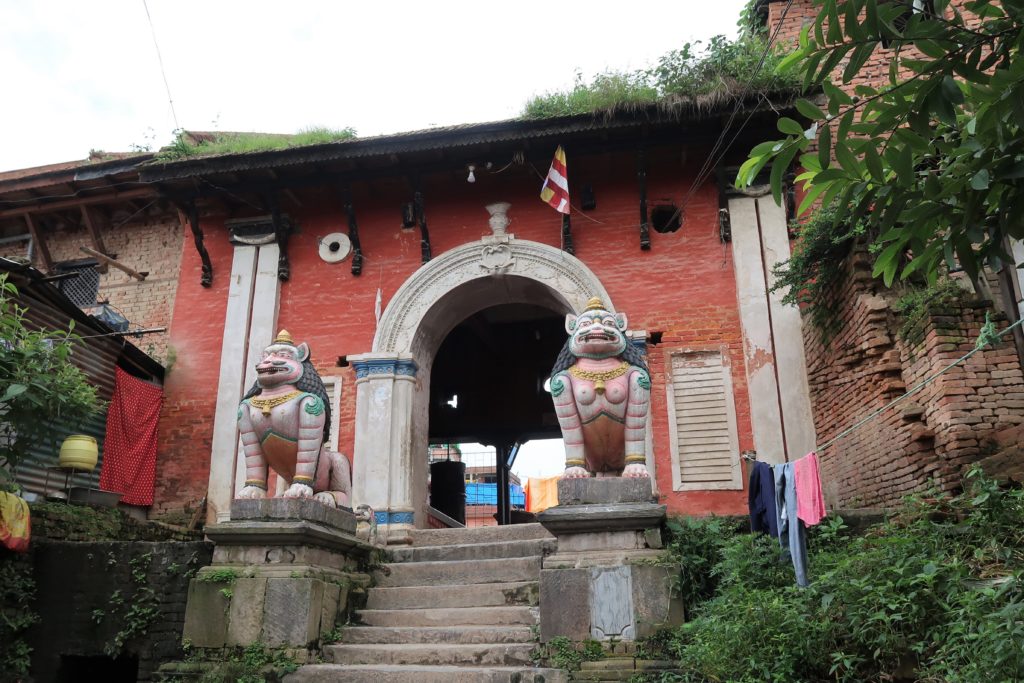 そこにあったはずの、シカラ Shikara 様式の美しい寺院は跡形もなく崩れ落ち、ようやく基壇が姿を現したばかりの様でした。
そこにあったはずの、シカラ Shikara 様式の美しい寺院は跡形もなく崩れ落ち、ようやく基壇が姿を現したばかりの様でした。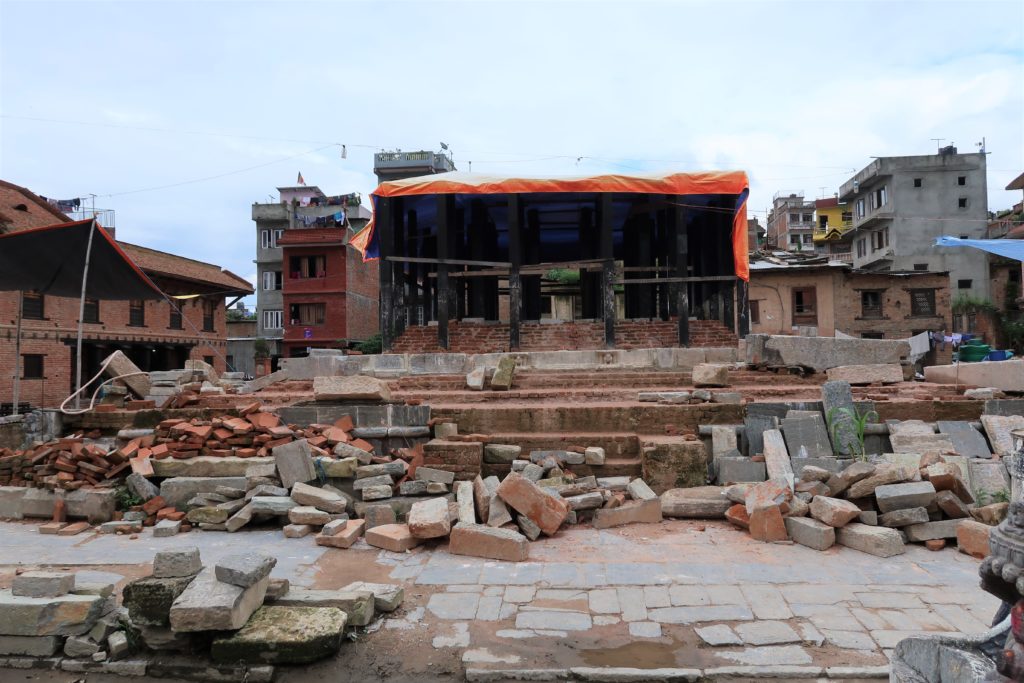
小さな祠の中に祀られた Rato Machhendranath にはお参りする人が途絶えることはありませんでした。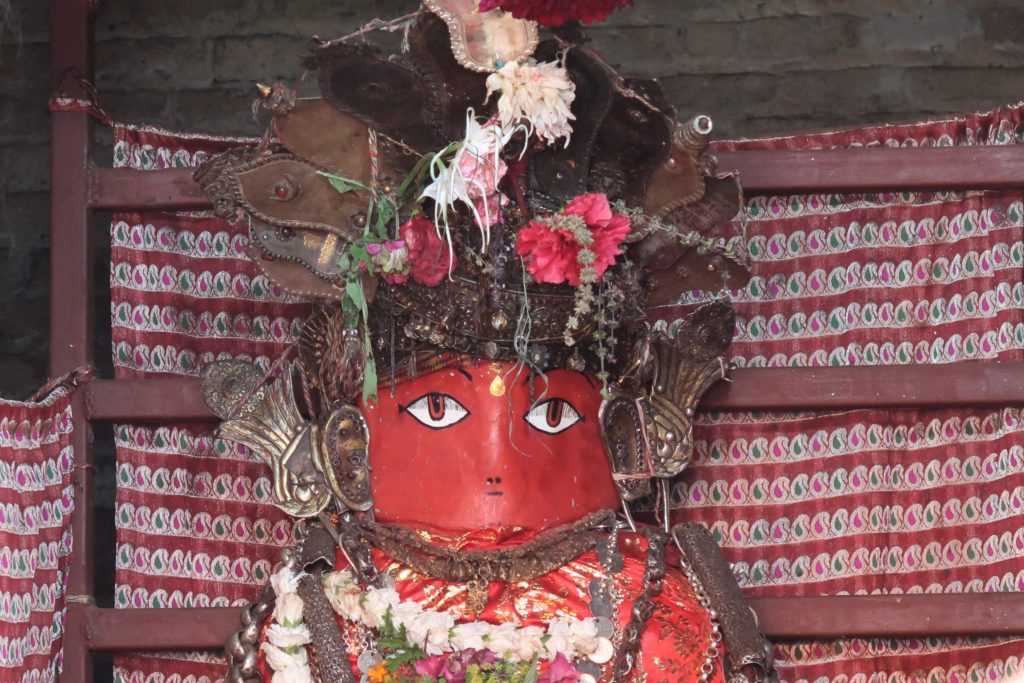 震災直後の2015年5月1日、The Kathmandu Post は「Rato Machhindranath Temple suffers complete devastation 」の記事で、この寺の崩壊と、それが12年毎に山車がやってくるお祭り Rato Machhendranath Jatra に及ぼす影響を伝えています。
震災直後の2015年5月1日、The Kathmandu Post は「Rato Machhindranath Temple suffers complete devastation 」の記事で、この寺の崩壊と、それが12年毎に山車がやってくるお祭り Rato Machhendranath Jatra に及ぼす影響を伝えています。
The temple of Rato Machhindranath, known as the god of harvest and rain, has been completely devastated. The temple of Bhairabnath located right before the Rato Machhindranath has also seen wreckage.
The Saturday destructive earthquake annihilated the structures of both the temples. The Rato Machhendranath Temple located in historical city of Bungmati was an attraction for a large number of domestic and foreign tourists.
The Rato Machchindranath Jatra or chariot festival is also known to be the longest Jatra observed in Kathmandu Valley. Local stakeholders have also expressed sorrow and confusion as to how to celebrate the chariot-procession festival in coming years with the devastation of the cultural heritage.
Guthi Sansthan Lalitpur In-charge Rudranath Adhikari said the responsibility of security of high-value materials inside the devastated temple has been given to Nepal Police.
Locals said that the effectiveness of the celebration of fair of Rato Machhindranath held in every 12 years has been weakened with the quake-triggered destruction of the ancient cultural heritage.

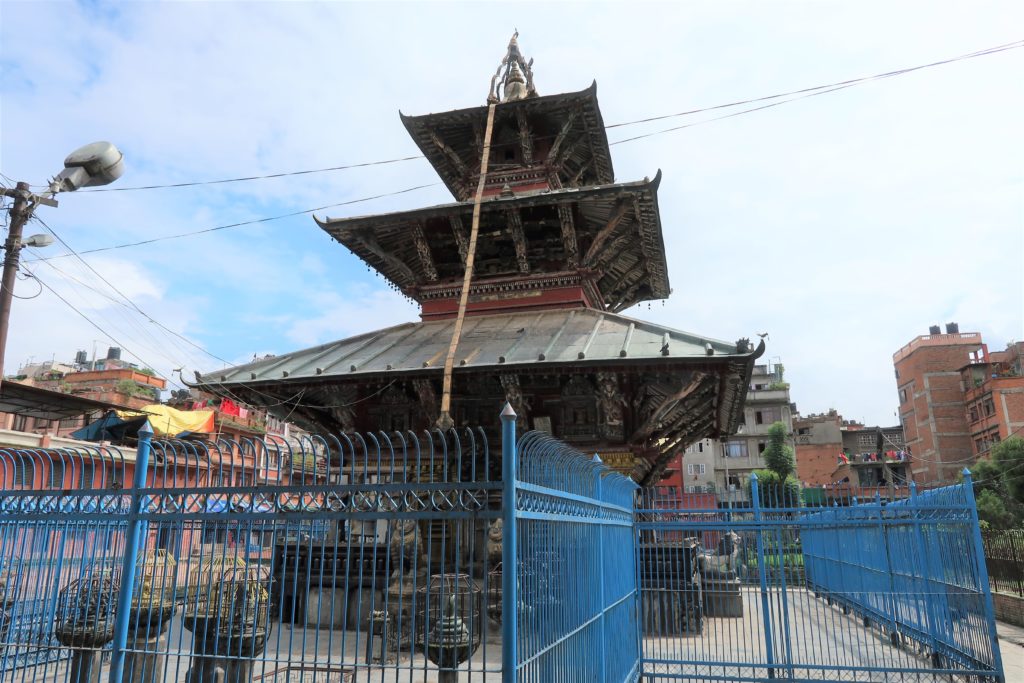 柵で囲まれ、もっと近くで見れないのが残念ですが、
柵で囲まれ、もっと近くで見れないのが残念ですが、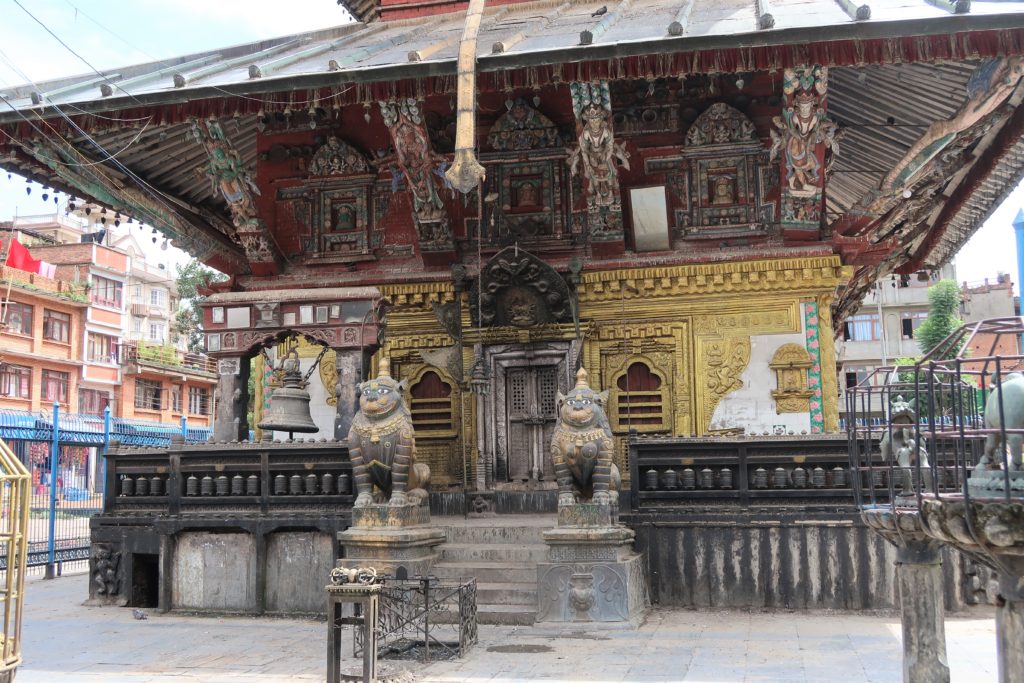
 是非ともお祭りも見てみたいものです。詳細が
是非ともお祭りも見てみたいものです。詳細が